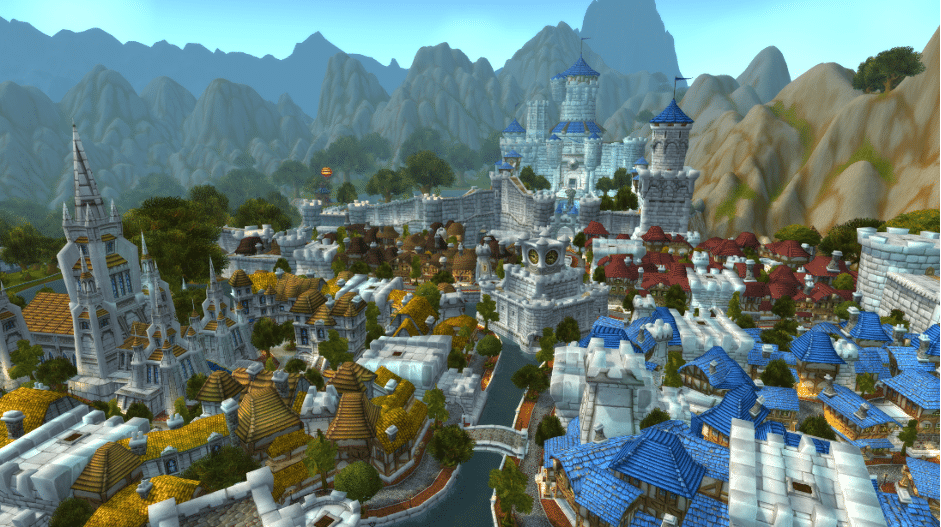In the world of video games, where stunning graphics, immersive worlds, and captivating narratives reign supreme, it’s easy to overlook the critical role of architecture. Yet, just like in the real world, architectural design in video games serves as the backbone of the entire experience. From the intricate landscapes of Azeroth in World of Warcraft to the bustling metropolises of Fortnite and the ever-evolving environments of The Witcher, architectural choices are key in creating engaging gaming experiences. Let’s dig deeper into the role of architecture in video games, exploring how it shapes gameplay, storytelling, and player immersion.
Architectural Marvels of Azeroth: World of Warcraft
When discussing architecture in video games, one cannot ignore how critical it is in World of Warcraft (WoW). Developed by Blizzard Entertainment, this iconic MMORPG has set a benchmark for architectural design in the gaming industry. Azeroth, the fictional world where WoW is set, boasts a rich tapestry of diverse architectural styles, each meticulously crafted to serve both functional and aesthetic purposes.
One of the key architectural marvels in WoW is the town of Stormwind. Designed by Glenn Rane, this grandiose city features soaring towers, intricate stonework, and majestic cathedrals. Its architecture is not merely eye candy but a crucial element in the game’s world-building. Stormwind’s layout and design encourage player exploration, with hidden nooks and crannies, making it a virtual city that feels alive and lived-in.
Furthermore, architectural elements are integrated into quests and storylines, deepening the player’s connection to the game’s world. World of Warcraft’s Mythic+ dungeons also feature unique architecture that enhances the experience and presents a unique challenge for players. Try to complete Halls of Infusion or Freehold on your own or with the help of Mythic+ boost services to enjoy the architecture of these instances.

Blizzard’s commitment to architectural detail extends to the various races and factions within WoW, each with its unique architectural styles. The majestic spires of the Night Elves’ city, Darnassus, contrast sharply with the rugged, mechanical aesthetic of the Dwarven capital, Ironforge. These architectural choices not only reflect the cultural diversity within the game but also influence gameplay mechanics and player immersion.
Building Worlds: The Role of Architecture in Fortnite
Developed by Epic Games, Fortnite is a prime example of how architecture can be leveraged to create dynamic and ever-evolving gaming experiences. Unlike traditional architectural design, Fortnite’s world is in a constant state of flux, with structures appearing and disappearing in real-time during gameplay.
The game’s core mechanic, building, allows players to construct on the fly using predefined building blocks. This simple yet ingenious architectural system enables players to shape the game environment to their advantage, whether by creating defensive fortifications or launching themselves into the air. Fortnite’s architectural innovation lies in its dynamic nature, with players co-creating the gaming environment as they play, showcasing the fusion of player agency and architectural design.
Fortnite also hosts special in-game events that redefine the landscape, often involving the destruction and reconstruction of significant landmarks. For example, the dramatic destruction of Tilted Towers and its subsequent transformation into Neo Tilted captured players’ imaginations and showcased the game’s architectural prowess.

The Witcher: Architecture Amidst Fantasy
The Witcher game by CD Projekt Red transports players to a rich and immersive fantasy world inspired by the book series of the same name. The game’s architecture reflects the diverse regions and cultures found in its expansive open world. The city of Novigrad, for instance, is a bustling metropolis with architectural elements reminiscent of medieval Europe. Its towering cathedrals, labyrinthine streets, and crowded marketplaces provide a vivid backdrop for the game’s intricate narrative. Novigrad’s architecture immerses players in the gritty, politically charged atmosphere of the game’s storyline.

In contrast, the elven city of Tir ná Lia showcases an ethereal and otherworldly architectural style. Its floating gardens, luminescent structures, and organic designs transport players to a realm of magic and mysticism. The architecture here serves as a visual storytelling tool, emphasizing the contrast between the elven culture and the human-dominated world.
The Future of Gaming Is in Architecture
The importance of architecture in video games cannot be overstated. From the sprawling realms of Azeroth in World of Warcraft to the dynamic landscapes of Fortnite, the intricate environments of The Witcher, and beyond, architecture is at the heart of gaming experiences. It serves as a storytelling tool, influences gameplay mechanics, enhances player immersion, and forms the technical foundation of virtual worlds. The architects of the gaming industry continue to astound us with their creativity and technical prowess, ensuring that the future of gaming is as architecturally rich as its past and present.
